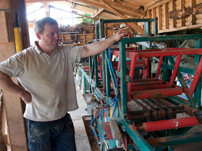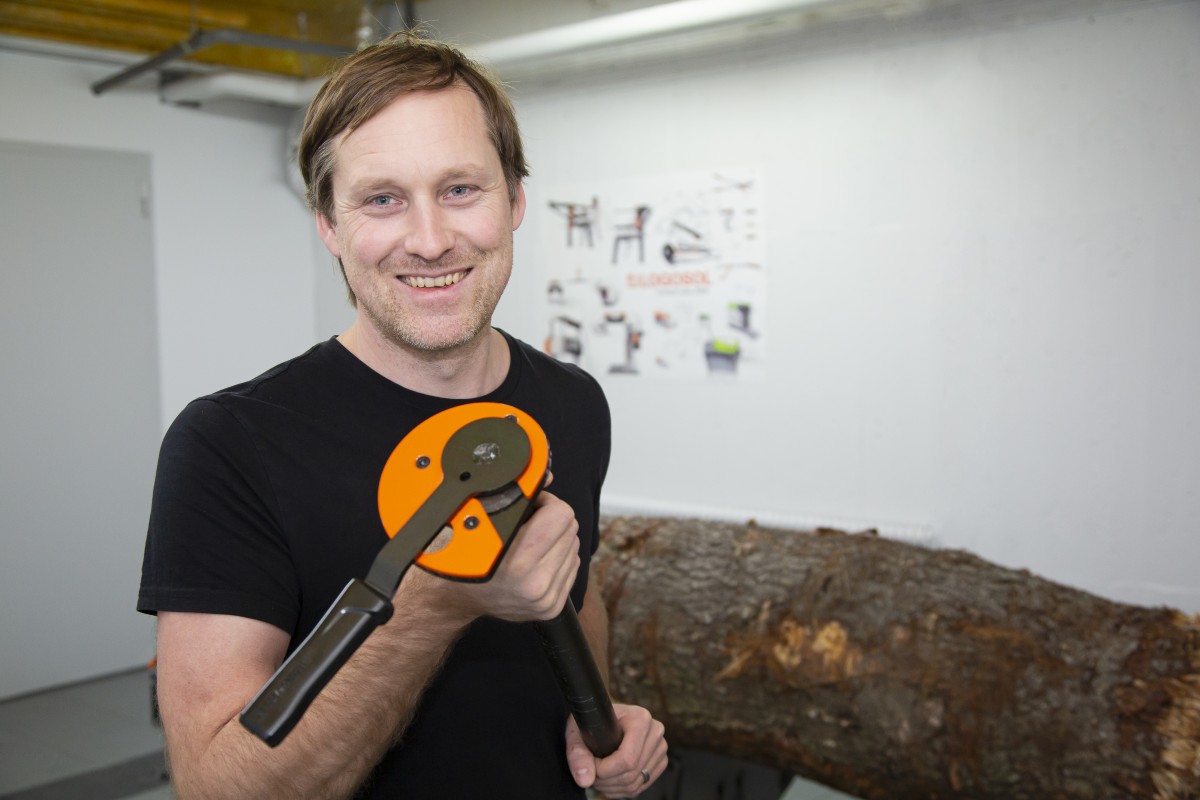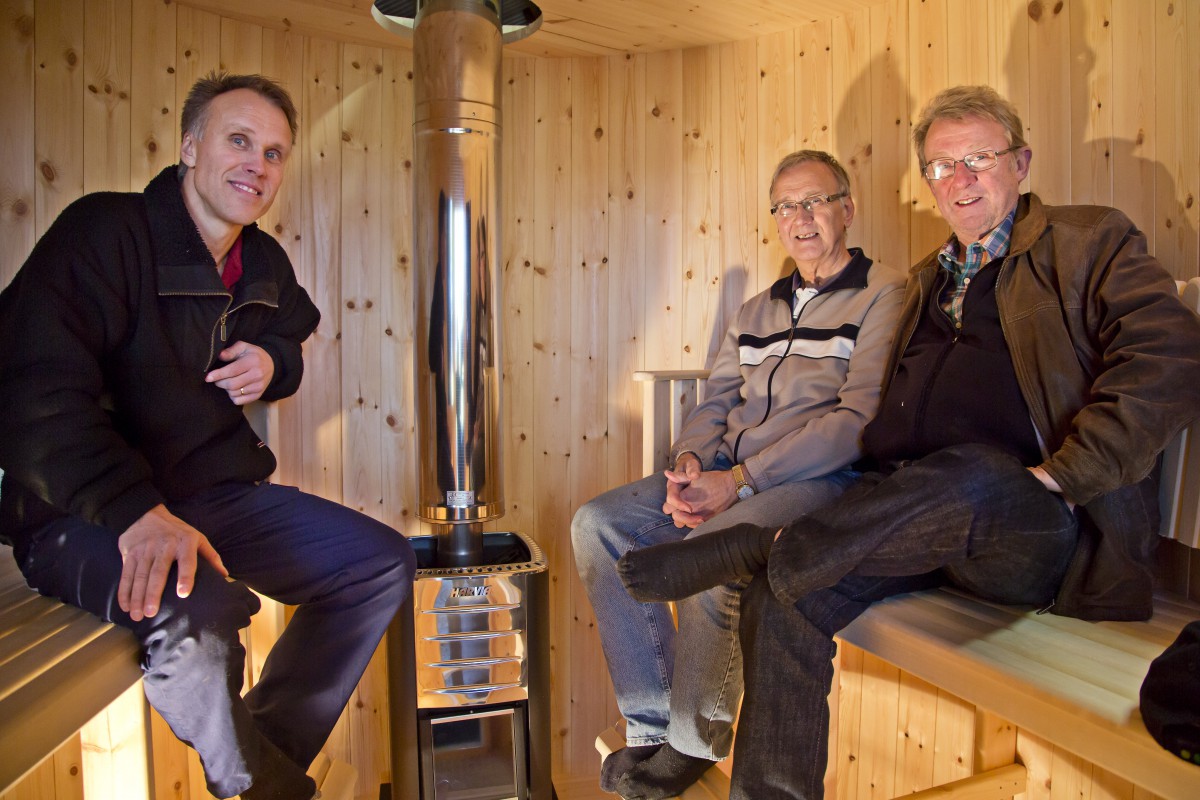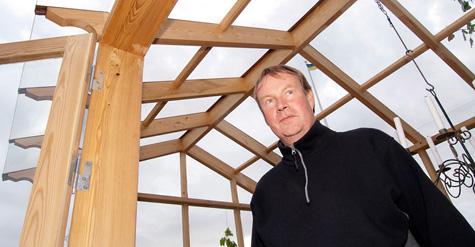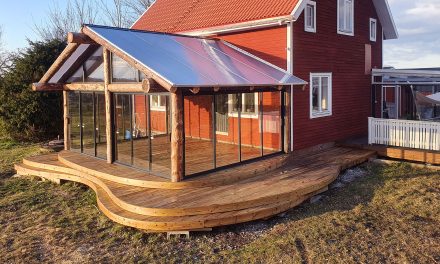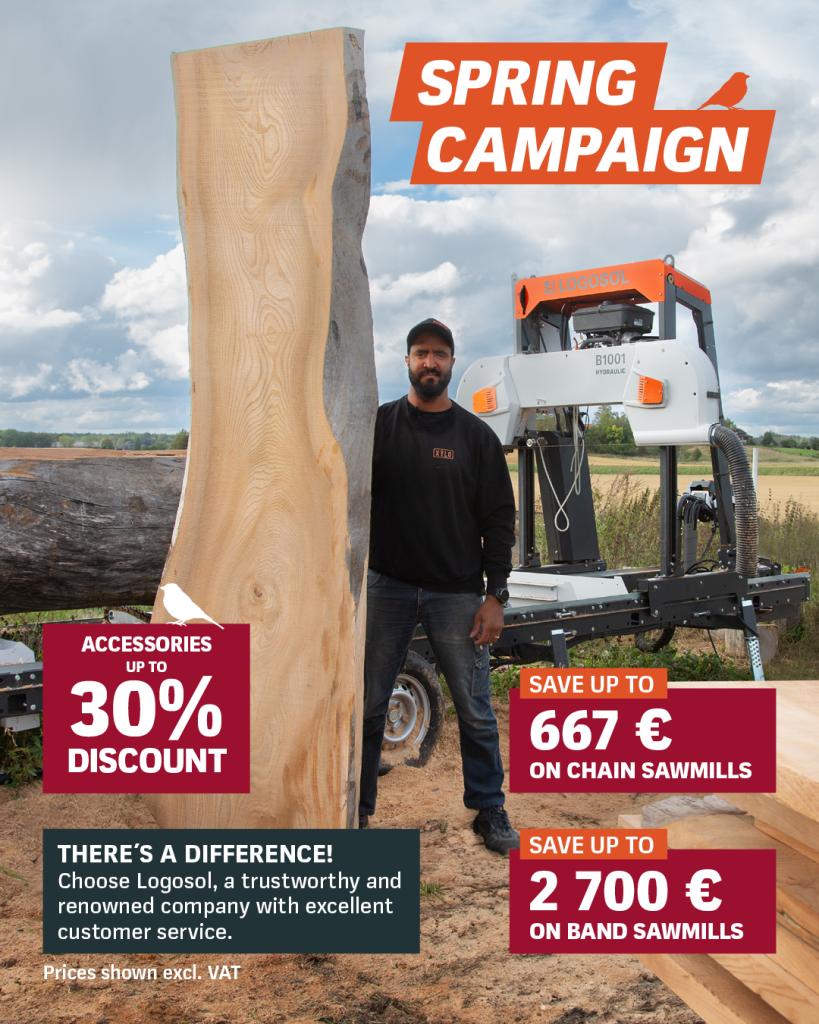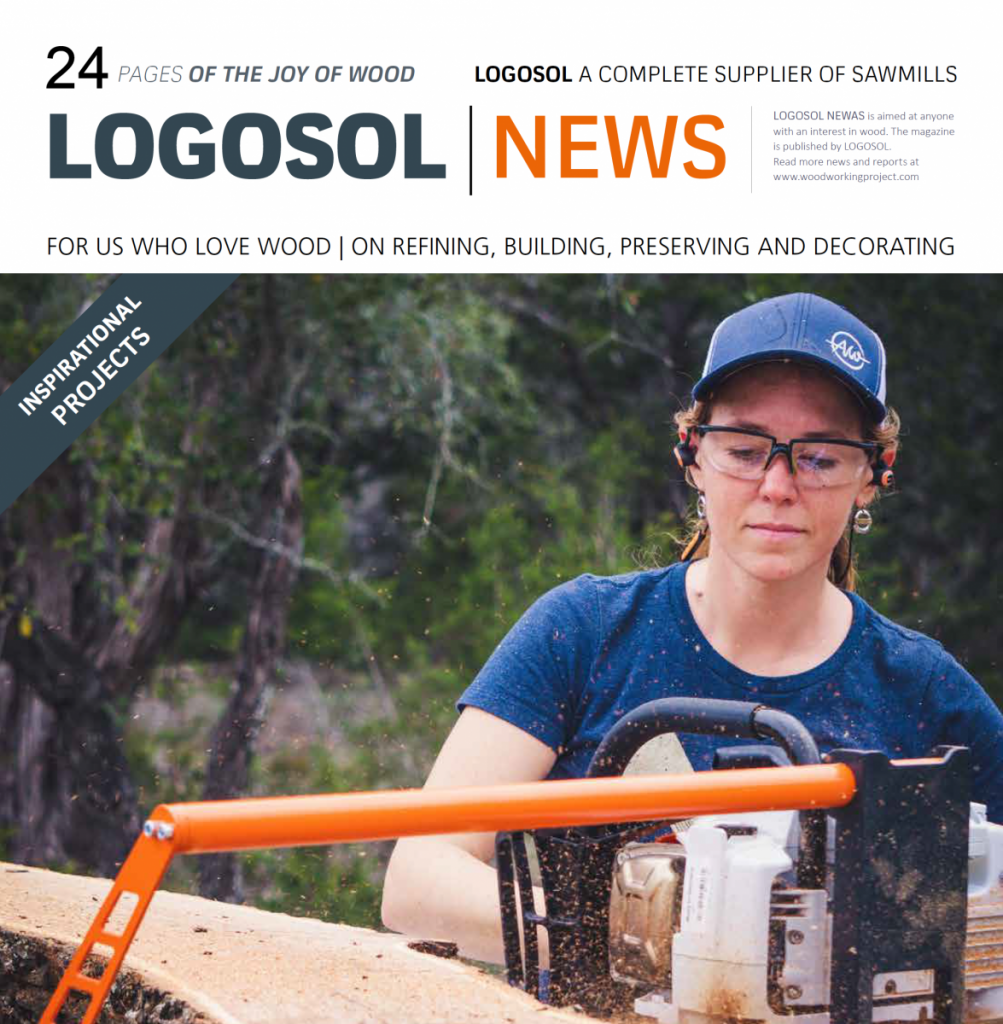Alister Lewis builds full timber houses according to customer requirements, right from the cutting of logs. He builds two houses a year, which is enough to keep his company going.
“I’ve never advertised, yet I’m fully booked up,” he says.
Lewis is based in the county of Shropshire on the border of England and Wales. Despite the fact that the area was the cradle of the Industrial Revolution, it’s now one of England’s most rural counties. More and more people are moving here from London on the hunt for bargain country properties.
However, this wave of migration has had a negative impact on people living in the county as property prices have sky-rocketed. But Lewis saw a business opportunity in the problem: Renovating existing homes and building new ones precisely to the requirements of the new influx. It’s all summed up in the name of his company – Bespoke.
Learned in the USA
Lewis lives on the family farm just outside the town of Ludlow and has established a wide network of contacts in the area with everyone from architects and structural engineers to forest owners. Essentially, he is an interiors carpenter and has also spent time working as a building carpenter in the USA.
“I was there for 18 months and learned to build timber frame houses. The technique is much more developed in the USA than here in the UK,” says Lewis.
Traditionally, British houses are built from stone, brick or concrete.
“Timber framed houses have many advantages, not least in terms of their low energy consumption,” says Lewis.
From forest to house
But instead of getting the tools out and starting to build timber houses, he developed a more far-reaching business concept that was based on an extensive reading about company financing. He came to the conclusion that the key to making his little company profitable was cutting out as many of the middle-men as possible and working in conjunction with collaboration partners to offer the entire chain of services from forest to finished house.
“I have good relationships with forest owners in the area and can buy timber that I finish myself,” he says.
He was equally careful in his choice of sawmill equipment as he was in the development of his business concept. The aim was to spend as little time as possible in the sawmill and as much time as possible out on site.
“It isn’t in the sawmill that I create the added value that customers are willing to pay more for,” says Lewis.
Saws everything in four days
The result was a bandsaw mill and a 500 Plus Logosol Låks frame sawmill, the biggest in the range. It is a highly efficient and reliable combination.
“I cut all the timber for a house in four days; three days on the bandsaw to produce blocks and side pieces and one day on the frame saw,” he says.
He started the sawmill 2½ years ago. In that time, he has completed five projects. All this means that the Låks saw is in almost new condition. Lewis estimates that it has run for a total of 90 hours.
“You can cut a lot of timber per hour with this sawmill,” says Lewis.
The alternative to the frame sawmill would have been to employ or hire staff to produce the timber needed for a house. By using a bandsaw and doing everything himself, he has significantly reduced the value creation time spent on site.
Develop to perfection
Today, he brings in other small business owners during parts of the project, primarily architects and structural engineers, as well as carpenters for when the frame is erected. But the only point of contact customers need remember when they want a custom-built house is Alister Lewis.

